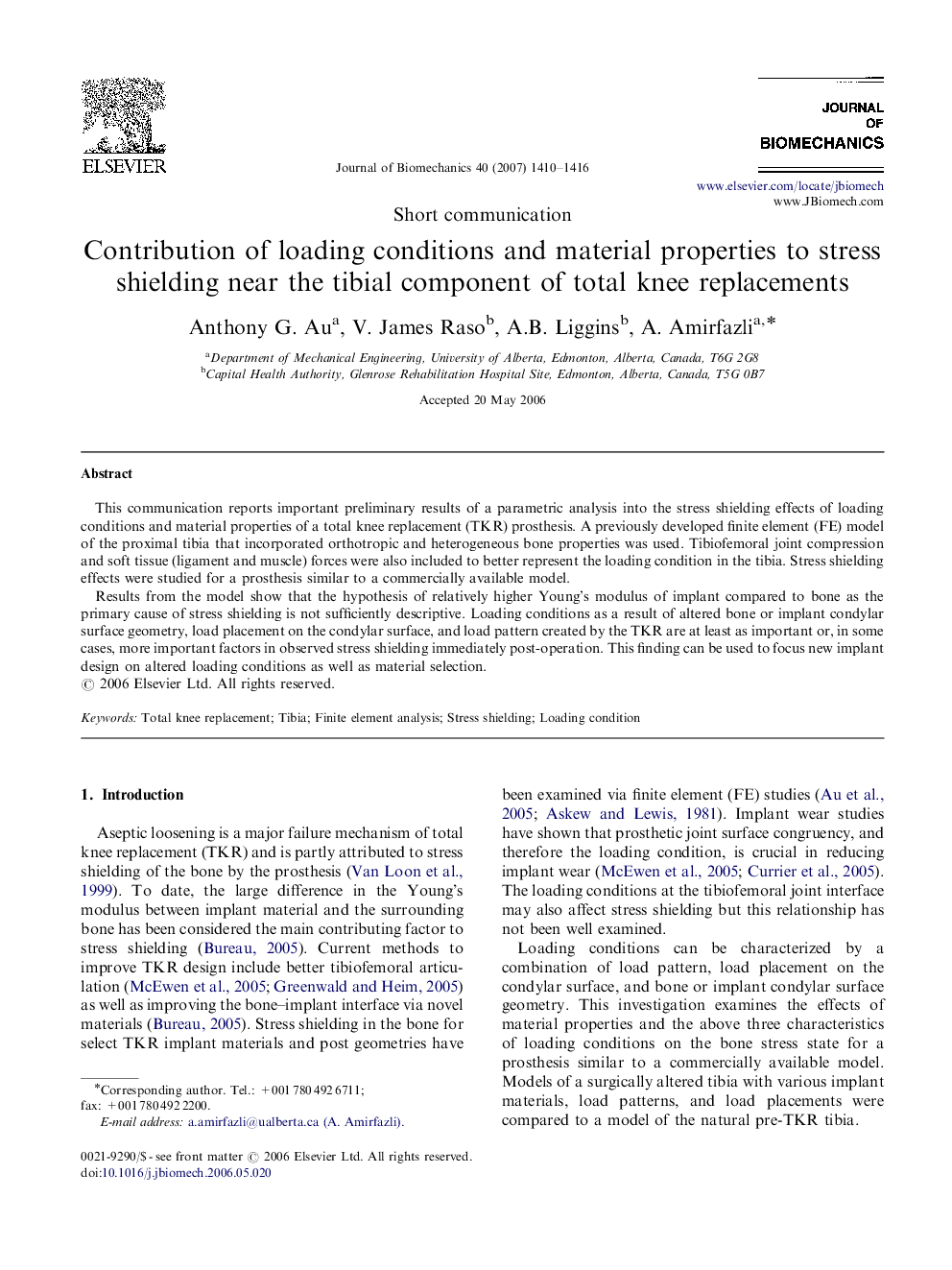| Article ID | Journal | Published Year | Pages | File Type |
|---|---|---|---|---|
| 874556 | Journal of Biomechanics | 2007 | 7 Pages |
This communication reports important preliminary results of a parametric analysis into the stress shielding effects of loading conditions and material properties of a total knee replacement (TKR) prosthesis. A previously developed finite element (FE) model of the proximal tibia that incorporated orthotropic and heterogeneous bone properties was used. Tibiofemoral joint compression and soft tissue (ligament and muscle) forces were also included to better represent the loading condition in the tibia. Stress shielding effects were studied for a prosthesis similar to a commercially available model.Results from the model show that the hypothesis of relatively higher Young's modulus of implant compared to bone as the primary cause of stress shielding is not sufficiently descriptive. Loading conditions as a result of altered bone or implant condylar surface geometry, load placement on the condylar surface, and load pattern created by the TKR are at least as important or, in some cases, more important factors in observed stress shielding immediately post-operation. This finding can be used to focus new implant design on altered loading conditions as well as material selection.
